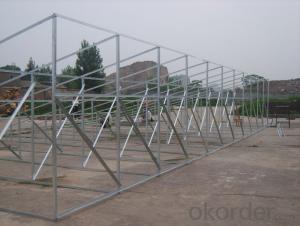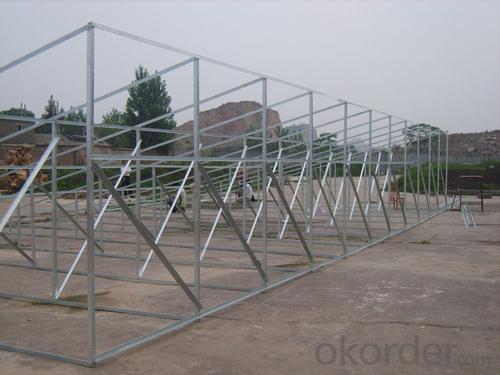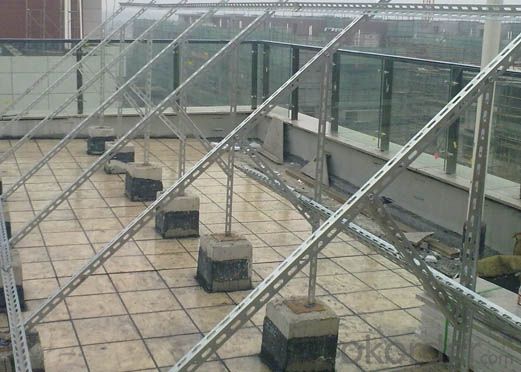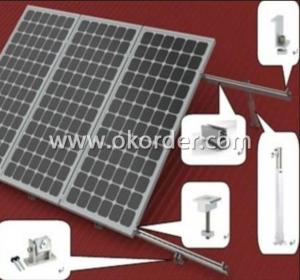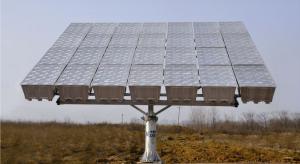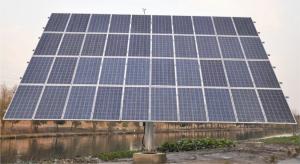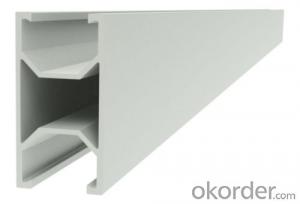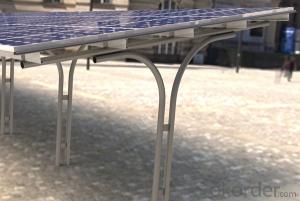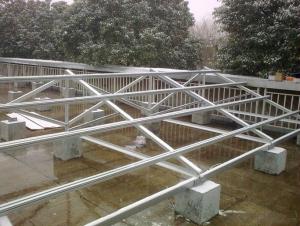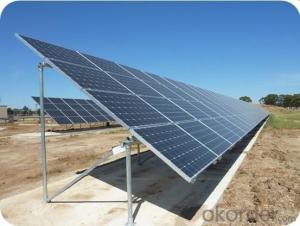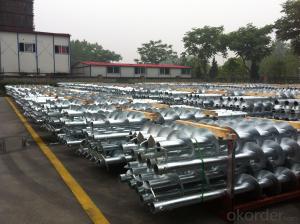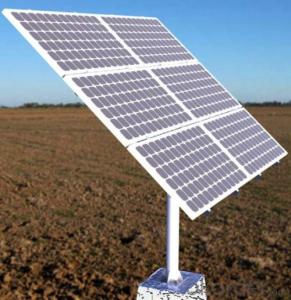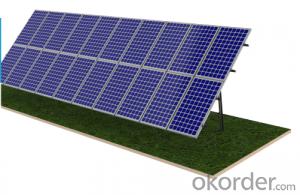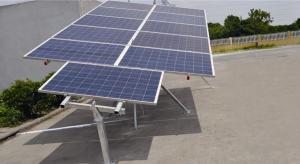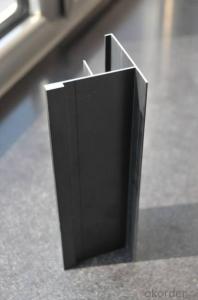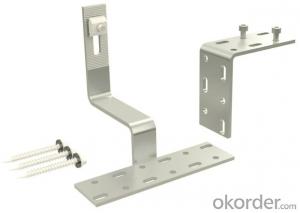K2 Mounting Systems Solar Ground Screw Piles Brackets
- Loading Port:
- China Main Port
- Payment Terms:
- TT OR LC
- Min Order Qty:
- -
- Supply Capability:
- -
OKorder Service Pledge
OKorder Financial Service
You Might Also Like
Specifications
ground screw for solar
1.Good corrosion and oxidation resistance.
1.Hot-dipped galvanized steel
2.advanced spiral
The ground screws are installed,using a number of different screwing aids and machines.This screw system is not only suitable for natural ground,but also for dense,and even tarred surfaces. Applications are countless,from securing garden umbrellas,windy dryers and fences;to carports,flag poles and traffic signs.Solar panel systems,advertising boards and even outdoor buildings for events and expositions are quickly and easily erected and removed.
Specification:
Name | Galvanized screw piles |
Dia | 52mm-300mm |
Thickness | 1.75mm-8mm |
Length | 550mm-3500mm |
Material | Steel,ISO 630 Fe360A |
Surface treatment | hot dipped galvanized |
Packing | Pallet |
Delivery Terms | 30-40days |
| Adjustment | 60mm |
| Durchmesser Lochbohrung | 3×M16 |
Easy to install:
The tilted module can be put into the extruded rail in any location and can be highly pre-assembly with the clamp to minimize the time and cost of installation.
High durability:
With all structural components comprised of high class stainless steel and anodized aluminum alloy, it is designed for 15 years service life.
Stand up to extreme weather:
This system is designed to stand up to the extreme weather complied with the AS/NZ1170 and other international structure load standard by the skilled engineer. The main support components have been tested to guarantee its structure and load-carrying capacity.
- Q: Can a solar mounting system be used for floating solar installations?
- Yes, a solar mounting system can be used for floating solar installations. Floating solar installations require specialized mounting systems that can withstand water conditions and effectively anchor solar panels on floating platforms such as pontoons or buoys. These mounting systems are designed to be durable, corrosion-resistant, and capable of withstanding waves, wind, and other environmental factors.
- Q: Are there any specific maintenance requirements for solar mounting systems in coastal areas?
- Yes, there are specific maintenance requirements for solar mounting systems in coastal areas. Due to the corrosive nature of saltwater and high levels of humidity, regular cleaning and inspection of the mounting system is necessary to prevent rust and corrosion. Additionally, the system should be designed to withstand strong winds and potential storm damage, requiring periodic checks and reinforcements if needed. It is crucial to follow manufacturer guidelines and work with professionals experienced in coastal installations to ensure the longevity and optimal performance of solar mounting systems in such environments.
- Q: Can a solar mounting system be installed in a high-wind or hurricane-prone area?
- Yes, a solar mounting system can be installed in a high-wind or hurricane-prone area. However, it is crucial to ensure that the mounting system is specifically designed and engineered to withstand the extreme weather conditions prevalent in such areas. These systems should be tested and certified to meet the required wind load ratings and be equipped with additional reinforcement features to prevent damage or failure during strong winds or hurricanes. Installation should also adhere to local building codes and regulations to ensure maximum safety and resilience.
- Q: Can a solar mounting system be used in areas with limited access to solar training centers?
- Yes, a solar mounting system can still be used in areas with limited access to solar training centers. While formal training can be beneficial, there are alternative resources available for learning about solar installation and maintenance. Online tutorials, manuals, and guides can provide valuable information and step-by-step instructions. Additionally, collaborating with experienced professionals or seeking guidance from manufacturers can help overcome the limitation of limited access to training centers.
- Q: What is the expected maintenance cost over the lifetime of a solar mounting system?
- The expected maintenance cost over the lifetime of a solar mounting system can vary depending on several factors such as the quality of the equipment, the location and environmental conditions, and the level of regular maintenance performed. However, on average, the maintenance cost for a solar mounting system is relatively low. It typically includes periodic inspections, cleaning of the panels, and potential repairs or replacements of components. These costs are usually estimated to be around 1-2% of the initial installation cost per year.
- Q: Can a solar mounting system be recycled?
- Yes, a solar mounting system can be recycled. The components of the system, including aluminum frames and steel brackets, can be separated and recycled to minimize waste and reduce environmental impact. Recycling such systems helps to conserve resources and promote sustainability in the solar industry.
- Q: Are there any specific requirements for air conditioning or HVAC system integration when using a solar mounting system?
- Yes, there are specific requirements for air conditioning or HVAC system integration when using a solar mounting system. The solar panels should not obstruct the airflow or access to the air conditioning or HVAC system. It is important to carefully plan the placement of the solar panels to avoid shading or blocking the vents, condensers, or any other essential components of the air conditioning or HVAC system. Additionally, proper ventilation should be ensured to prevent overheating of the system and maintain its efficiency.
- Q: Can a solar mounting system be used in areas with limited access to grid interconnection options?
- Yes, a solar mounting system can be used in areas with limited access to grid interconnection options. Off-grid solar systems, also known as standalone solar systems, are designed to operate independently without relying on the grid for power. These systems typically include solar panels, a battery bank to store excess energy, and an inverter to convert DC power from the panels into AC power for use. By utilizing this type of solar mounting system, areas with limited grid interconnection options can still benefit from solar energy generation.
- Q: What is the expected increase in property value with a solar mounting system installation?
- The expected increase in property value with a solar mounting system installation can vary depending on various factors such as location, size of the system, energy savings, and local market conditions. However, studies have shown that on average, homes with solar installations tend to have a higher resale value compared to homes without solar. Some estimates suggest that solar installations can increase property values by 3-4%, but it's important to note that this can vary significantly based on individual circumstances.
- Q: Can a solar mounting system be used with solar-powered cars?
- No, a solar mounting system is typically used to install and support solar panels on rooftops or the ground, whereas solar-powered cars have built-in solar panels that are integrated into the vehicle's design.
Send your message to us
K2 Mounting Systems Solar Ground Screw Piles Brackets
- Loading Port:
- China Main Port
- Payment Terms:
- TT OR LC
- Min Order Qty:
- -
- Supply Capability:
- -
OKorder Service Pledge
OKorder Financial Service
Similar products
Hot products
Hot Searches
Related keywords
